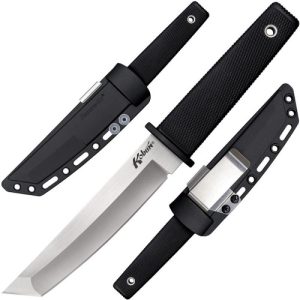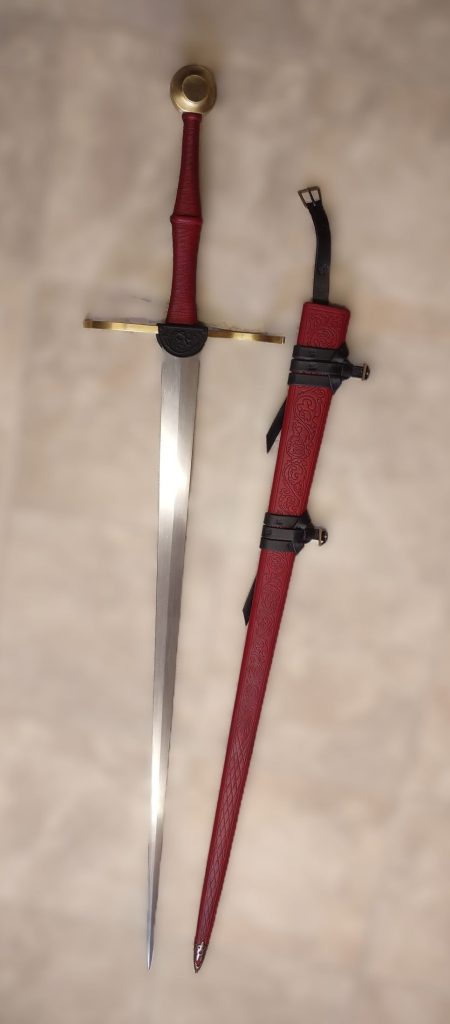In Canada, by law, there is no specific age requirement to buy a knife. However, some provinces and municipalities may have their own regulations. For example, in Quebec, you must be at least 18 years old to purchase a knife with a blade longer than 10 centimetres. In Ontario, the minimum age is 19 years for knives longer than 30 centimetres. Always check local laws, as they can vary by region. In Alberta, most retailers impose a limit of 18-years-old to purchase anything over 5 cm, and some municipalities have their own bylaws.
 Canada’s knife laws can be confusing, with different rules for different types of knives. While some knives are banned outright, the legality of others depends on the context in which they are used. For example, while it is legal to own a hunting knife or a fixed-blade knife, using one for an illegal purpose is prohibited. Similarly, while kitchen knives are generally considered safe to own, using one as a weapon would be illegal. Certain knives, such as switchblades, butterfly knives, and gravity knives, are banned in Canada, while the law regarding folding knives is more complex, with some types being permitted and others prohibited. The Canadian Criminal Code states that knives with blades that open automatically or by hand pressure are prohibited, and that any concealed knife is considered a weapon and can be charged criminally.
Canada’s knife laws can be confusing, with different rules for different types of knives. While some knives are banned outright, the legality of others depends on the context in which they are used. For example, while it is legal to own a hunting knife or a fixed-blade knife, using one for an illegal purpose is prohibited. Similarly, while kitchen knives are generally considered safe to own, using one as a weapon would be illegal. Certain knives, such as switchblades, butterfly knives, and gravity knives, are banned in Canada, while the law regarding folding knives is more complex, with some types being permitted and others prohibited. The Canadian Criminal Code states that knives with blades that open automatically or by hand pressure are prohibited, and that any concealed knife is considered a weapon and can be charged criminally.
| Classification | Values |
|---|---|
| Legal knives | Hunting knives, fixed-blade knives, kitchen knives, knives with thumb studs, pocket knives, multi-tools, utility knives, folding knives |
| Illegal knives | Spring-assisted knives, switchblades, butterfly knives, balisongs, knives that open by centrifugal force, gravity knives, push daggers, automatic knives |
| Other laws | Knives must be visible and not concealed, knives must be used as tools and not weapons, no blade size restrictions, knives cannot be carried inside vehicles without sufficient legal reason |
Knives that are legal within Canada may be confiscated at the border
Canada’s knife laws can be confusing, and even knives that are legal within the country may be confiscated at the border. While there are no blade size restrictions, the knife must be visible and cannot be concealed, as per the Criminal Code of Canada. Any concealed knife is considered a weapon, and carrying a prohibited weapon is a criminal offence.
It’s important to note that the purpose of possession matters. Canadian law requires that you have a lawful purpose for carrying a knife, such as work, construction, outdoor activities like camping or hiking, or hunting and fishing. Knives that are considered legal when bought within Canada might still be confiscated at the border if they fall into a grey area regarding importation laws. The Canadian authorities take the importation of knives seriously, so it’s important to ensure your purchases comply with Canadian law to prevent issues upon entry.
Certain knives are illegal to import and possess, including butterfly knives, centrifugal force knives, push daggers, brass knuckles, automatic knives or switchblades, and gravity knives. These knives are prohibited under Canadian law, and possession can result in serious legal consequences.
Additionally, the Canada Border Services Agency (CBSA) has the authority to confiscate certain knives, even if they are legal according to Canadian laws. This includes flippers, slip joints, and assisted opening knives. The CBSA’s test is whether a knife can be flicked open with one hand after “minimal manipulation”, which includes pushing on thumb studs, flippers, and pulling on a slip joint.
It’s worth noting that while some folding knives can be legally owned in Canada, importing them from other countries might be subject to specific regulations. It’s always best to stay up-to-date with the latest knife laws and regulations to avoid any legal issues.
Knives must be used as tools, not weapons
Knife laws in Canada are complex and vary across provinces, territories, municipalities, cities, police, and courts of justice. While there are no blade size restrictions, the knife must be visible and not concealed. It must be used as a tool and not a weapon. For example, it can be used for wood carving, opening boxes, demolition in construction, or hunting when doing field dressing. Any concealed knife is considered a weapon and can be charged criminally under the Criminal Code for carrying a prohibited weapon.
The purpose of possession is essential in Canadian law. You must have a lawful purpose for carrying a knife, such as a work-related purpose or outdoor activities like camping or hiking. Simply carrying a knife without a valid reason may be considered a criminal offense. Knives that are considered legal within Canada might still be confiscated at the border if they fall into a grey area regarding importation laws.
Certain types of knives are illegal in Canada. These include automatic knives or switchblades, which open with the press of a button or a quick wrist flick, and butterfly knives or balisongs, which have a similar opening mechanism. Additionally, gravity knives, which open with a flick of the wrist and lock into place, are also prohibited. Knives with these mechanisms are illegal regardless of the intent of the owner.
It is important to note that the Canadian Criminal Code defines a prohibited weapon as “a knife that has a blade that opens automatically by gravity or centrifugal force or by hand pressure applied to a button, spring or other device attached to or in the handle of the knife.” Knives that fall under this definition are illegal to import, possess, or carry across borders. It is crucial to be aware of the specific regulations and restrictions regarding knives when travelling to or within Canada to avoid any legal issues.
It is worth noting that certain knives are prohibited in Canada, such as butterfly knives, throwing knives, and knives that resemble other objects like sword canes or belt buckle knives. Additionally, the police and local jurisdictions have the authority to prohibit the carrying or possession of knives if the owner cannot establish a valid reason for doing so, especially in urban areas or public events.
Remember, when in Canada, it is essential to know that knives must be used as tools and not as weapons. This means using them for their intended purposes, such as hunting, fishing, or construction work. Understanding the local laws and regulations regarding knives is crucial to ensure safe and lawful usage. While certain types of knives are prohibited, many others can be owned and carried for lawful purposes, as long as they are not concealed and are used responsibly.
Hunting knives and fixed-blade knives are legal (so are Swords)

In Canada, hunting knives and fixed-blade knives are legal to own and carry as long as they are not concealed and are used for lawful purposes. This means that the knife must be used as a tool, such as for wood carving, opening boxes, demolition in construction, hunting when doing field dressing, or camping. Any concealed knife is considered a weapon and can be charged criminally under the Criminal Code for carrying a prohibited weapon.
It is important to note that the laws regarding knives in Canada can vary across provinces, territories, municipalities, cities, police, and courts of justice. Therefore, it is essential to be aware of the specific regulations in your area. Additionally, while hunting knives and fixed-blade knives are generally legal, certain types of knives are prohibited in Canada.
Some knives that are illegal to possess or carry in Canada include butterfly knives, centrifugal force knives (such as flick knives), push daggers, brass knuckles, and automatic knives or switchblades. These knives are considered prohibited weapons under the Canadian Criminal Code and can result in serious legal consequences if possessed or carried. It is also worth mentioning that the import and export of prohibited weapons are strictly regulated and enforced by the Canada Border Services Agency.
When travelling with knives in Canada, it is important to comply with the regulations. Knives that are legal within Canada might still be confiscated at the border if they fall into a grey area regarding importation laws. Additionally, airlines may allow you to travel with legal knives or swords if they are properly packed in locked luggage checked for cargo. However, knives of any type or length are typically prohibited in carry-on luggage for flights to the US.
For Canadian law, swords are considered fixed blades and classified as collectible items or tools. This means that using a sword for practicing cutting as a martial art is legal, but using it as a weapon is illegal. Martial arts practice swords, such as HEMA sparring swords, are not considered blades under Canadian law, neither are tools such as bokken and synthetic swords.
It is also important to note that karambit knives are legal to own and carry in Canada. As they have not been listed among the prohibited weapons in Canada. However, it is always a good idea to check with local authorities to ensure that there are no specific regulations or restrictions in your area.
Further reading: https://lawshun.com/article/what-are-the-knife-laws-in-canada

